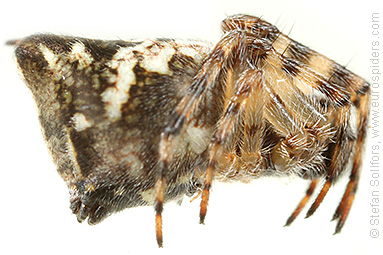Facts
Here is your hub for the most interesting and unique facts surrounding this amazing organism!
Now how on Earth did you come to research this particular
organism, you might ask? Well, Amanda and I were assigned a website
project as part of our Organismal Biology class. With this
assignment we were expected to research the plethora of knowledge of a particular
organism from our professor, Dr. Meredith Thomsen's, research site
in California. This site is referred to as the
Angelo Reserve. From the moment we laid our eyes on this tiny,
peculiar spider we fell in love. Read on to see some of the
fascinating facts that fueled the flame of our intrigue with this
organism!
.jpg)
•The Cyclosa conica builds a web that is decorated with stabilimenta
that can include remaining parts of its prey (Tso 1998).
•Their web structure allows them to capture about 150% more prey
(Tso 1998)!
•The Cyclosa utilizes its prey in its web as a source of camoflague
(Tso 1998).
•The Cyclosa conica only have one mate, just like humans (Rittschof
et al. 2011)!
•Male Cyclosa get very territorial over their women and block their
ability to reproduce without them with their pedipalps (Economist
2003).
•Males sacrifice their lives and die after
reproduction (Economist
2003).
•The females are larger than the males (Blamires 2010).
•The Cyclosa conica have been found to contain a newly discovered
bacterial parasite Cardinium that has been a new source of research
throughout the scientific field (Stefanini and Duron 2012).
•Cyclosa conica are oftentimes referred to as
trashline
orbweavers based on their stabilimenta (Blackledge et al. 2005).
<<Interactions
References
Contact >>


.jpg)